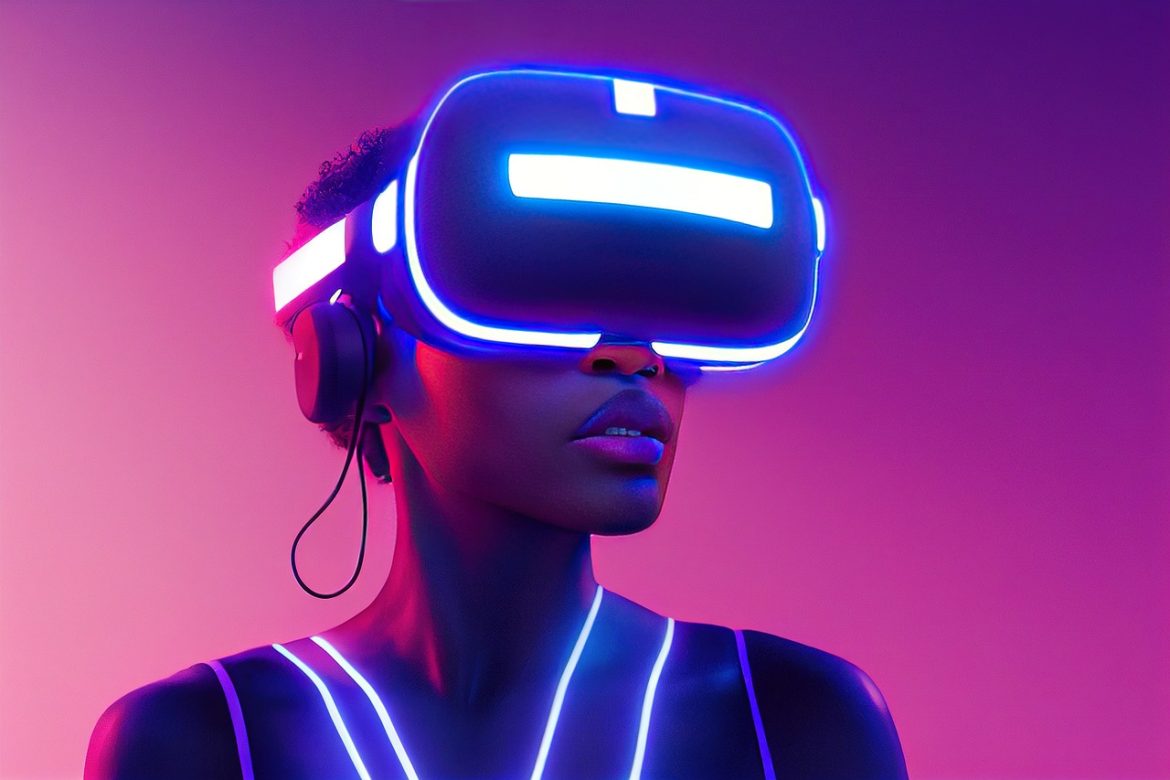Table of Contents
Augmented Reality (AR) and Virtual Reality (VR) are two of the most exciting technologies reshaping how we interact with digital content and experience the world around us. While both technologies offer immersive experiences, they do so in fundamentally different ways and serve distinct purposes. This article explores the key differences between AR and VR, their applications, and how each technology is shaping various industries.

Understanding Augmented Reality (AR) and Virtual Reality (VR)
Augmented Reality (AR): AR overlays digital content onto the real world, enhancing the user’s perception of their physical environment. It integrates virtual elements—such as images, information, or animations—into the user’s view of the real world. AR is typically experienced through devices like smartphones, tablets, or AR glasses.
Virtual Reality (VR): VR creates a completely immersive digital environment that replaces the real world. Users are transported to a fully virtual space where they can interact with and explore digital objects and environments. VR is usually experienced through headsets that cover the eyes and sometimes include additional equipment such as motion controllers or haptic feedback devices.
Key Differences Between AR and VR

- Immersion Level:
- AR: AR enhances the real world by adding virtual elements to it. Users remain aware of their physical surroundings while interacting with digital content. For example, AR can project navigation directions onto a car’s windshield or display information about a product in a retail store.
- VR: VR offers a fully immersive experience by creating a virtual environment that completely replaces the real world. Users are isolated from their physical surroundings and engage exclusively with the virtual world. For example, VR can simulate a distant location or a fantastical realm where users can interact with the environment and characters.
- Interaction with Physical Environment:
- AR: AR interacts with the physical environment by overlaying virtual elements onto it. This interaction can be dynamic, responding to changes in the real world, such as moving objects or varying lighting conditions.
- VR: VR creates a simulated environment where users do not interact with their physical surroundings. The focus is on the virtual world, and any interaction is limited to the virtual environment and objects within it.
- Device Requirements:
- AR: AR experiences can be accessed using devices with cameras and screens, such as smartphones, tablets, or AR glasses. These devices capture the real world and display augmented information on top of it.
- VR: VR requires specialized headsets that cover the eyes and often include motion controllers for interaction. Some VR systems also include external sensors or cameras to track the user’s movements and adjust the virtual environment accordingly.
- Applications:
- AR: AR is used in various practical applications, including navigation aids, educational tools, and interactive marketing. Examples include AR navigation apps that project directions onto a smartphone screen, educational apps that overlay information onto physical objects, and AR advertisements that engage users by providing additional content when scanned.
- VR: VR is primarily used for immersive experiences, including gaming, simulation training, and virtual tours. Examples include VR games that transport players to fantasy worlds, simulation training for pilots or surgeons, and virtual tours of landmarks or museums.
Applications and Use Cases

Augmented Reality (AR) Applications:
- Retail and Marketing: AR enhances shopping experiences by allowing customers to visualize products in their real-world environment before making a purchase. For example, AR apps can show how furniture would look in a room or how a piece of clothing would fit.
- Education and Training: AR provides interactive learning experiences by overlaying educational content onto physical objects. For instance, AR can display anatomical information on a model of the human body or provide historical context to artifacts in a museum.
- Navigation: AR navigation apps overlay directions and points of interest onto the user’s view of the real world. This can help users find their way more easily, whether they are driving, walking, or using public transportation.
- Maintenance and Repair: AR can assist technicians by overlaying step-by-step instructions or schematics onto machinery. This helps ensure accurate repairs and maintenance by providing real-time guidance.
Virtual Reality (VR) Applications:
- Gaming: VR gaming provides immersive experiences by allowing players to interact with and explore virtual worlds. Games designed for VR often feature detailed environments, interactive elements, and realistic simulations that enhance the gaming experience.
- Simulation Training: VR is used in training simulations for various professions, including pilots, surgeons, and military personnel. These simulations provide realistic scenarios for practice and skill development without the risks associated with real-world training.
- Virtual Tourism: VR enables users to explore virtual replicas of landmarks, museums, and natural wonders. This application is particularly valuable for individuals who cannot physically visit these locations, offering them an immersive way to experience new places.
- Therapy and Rehabilitation: VR is used in therapeutic settings to help patients with conditions such as phobias, post-traumatic stress disorder (PTSD), or physical rehabilitation. VR therapy provides controlled environments for exposure therapy, relaxation exercises, and motor skill practice.
Conclusion
Augmented Reality (AR) and Virtual Reality (VR) are both transformative technologies with unique capabilities and applications. AR enhances the real world by overlaying digital content onto it, while VR immerses users in entirely virtual environments. Each technology offers distinct benefits and use cases, from improving retail experiences and educational tools with AR to providing immersive gaming and simulation training with VR.
As both technologies continue to evolve, their applications are likely to expand further, offering new opportunities for innovation and engagement. Understanding the key differences and potential uses of AR and VR can help businesses and individuals leverage these technologies effectively to enhance experiences and drive progress in various fields.


